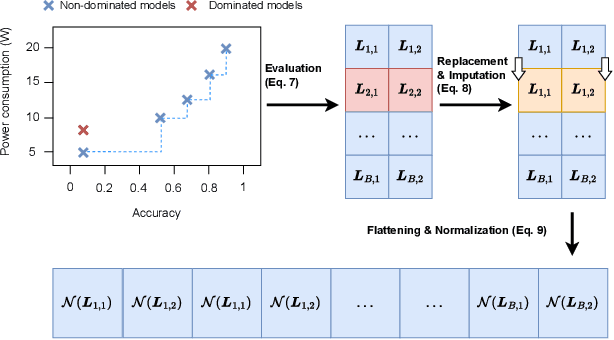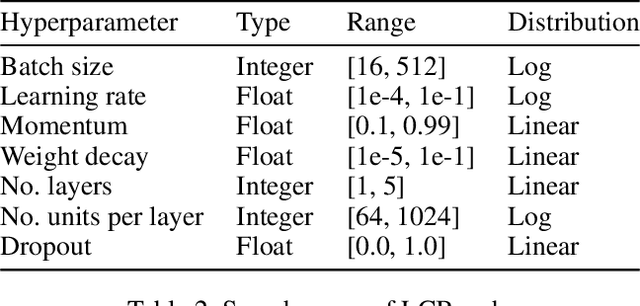Interactive Hyperparameter Optimization in Multi-Objective Problems via Preference Learning
Paper and Code
Sep 13, 2023



Hyperparameter optimization (HPO) is important to leverage the full potential of machine learning (ML). In practice, users are often interested in multi-objective (MO) problems, i.e., optimizing potentially conflicting objectives, like accuracy and energy consumption. To tackle this, the vast majority of MO-ML algorithms return a Pareto front of non-dominated machine learning models to the user. Optimizing the hyperparameters of such algorithms is non-trivial as evaluating a hyperparameter configuration entails evaluating the quality of the resulting Pareto front. In literature, there are known indicators that assess the quality of a Pareto front (e.g., hypervolume, R2) by quantifying different properties (e.g., volume, proximity to a reference point). However, choosing the indicator that leads to the desired Pareto front might be a hard task for a user. In this paper, we propose a human-centered interactive HPO approach tailored towards multi-objective ML leveraging preference learning to extract desiderata from users that guide the optimization. Instead of relying on the user guessing the most suitable indicator for their needs, our approach automatically learns an appropriate indicator. Concretely, we leverage pairwise comparisons of distinct Pareto fronts to learn such an appropriate quality indicator. Then, we optimize the hyperparameters of the underlying MO-ML algorithm towards this learned indicator using a state-of-the-art HPO approach. In an experimental study targeting the environmental impact of ML, we demonstrate that our approach leads to substantially better Pareto fronts compared to optimizing based on a wrong indicator pre-selected by the user, and performs comparable in the case of an advanced user knowing which indicator to pick.
 Add to Chrome
Add to Chrome Add to Firefox
Add to Firefox Add to Edge
Add to Edge